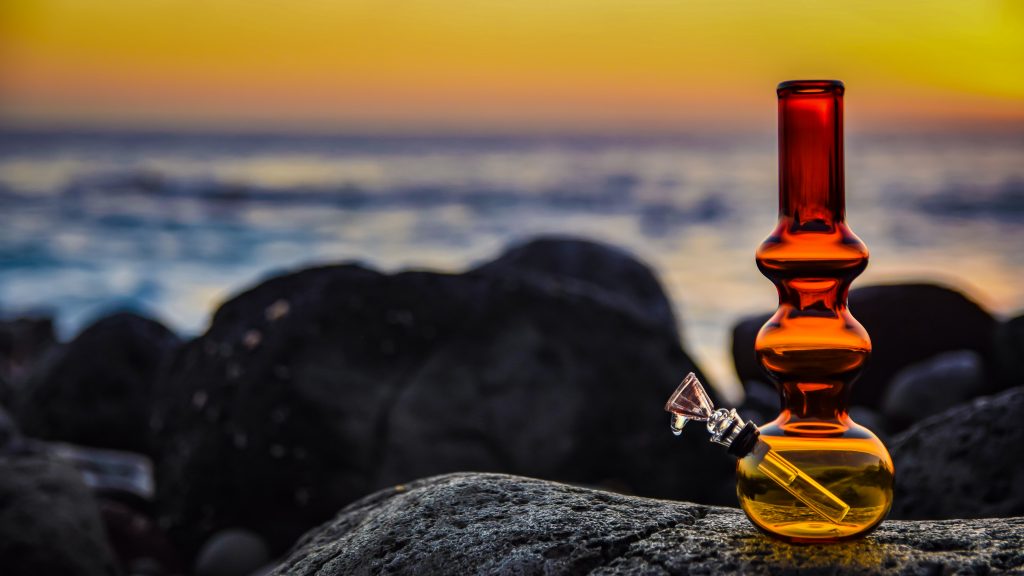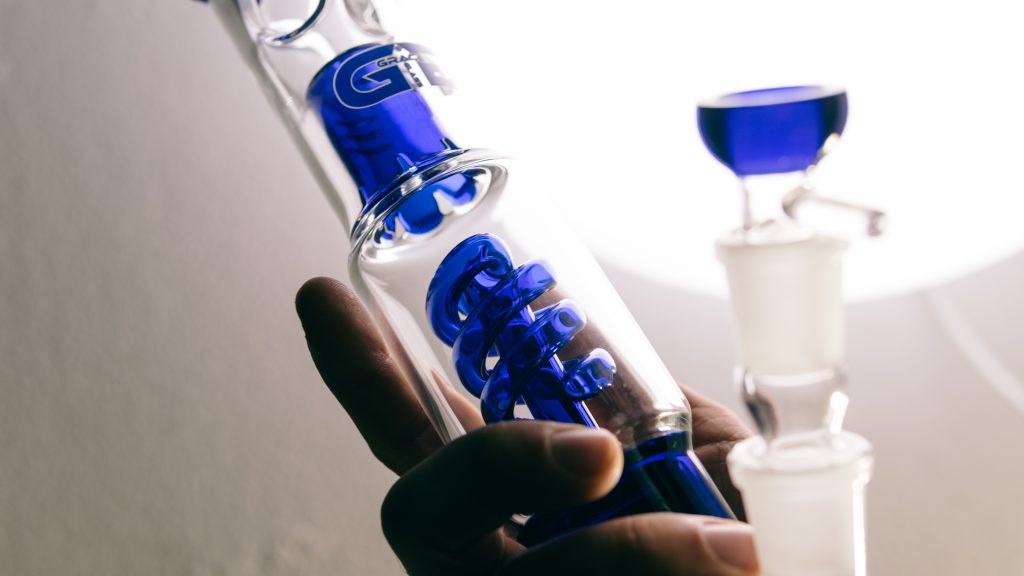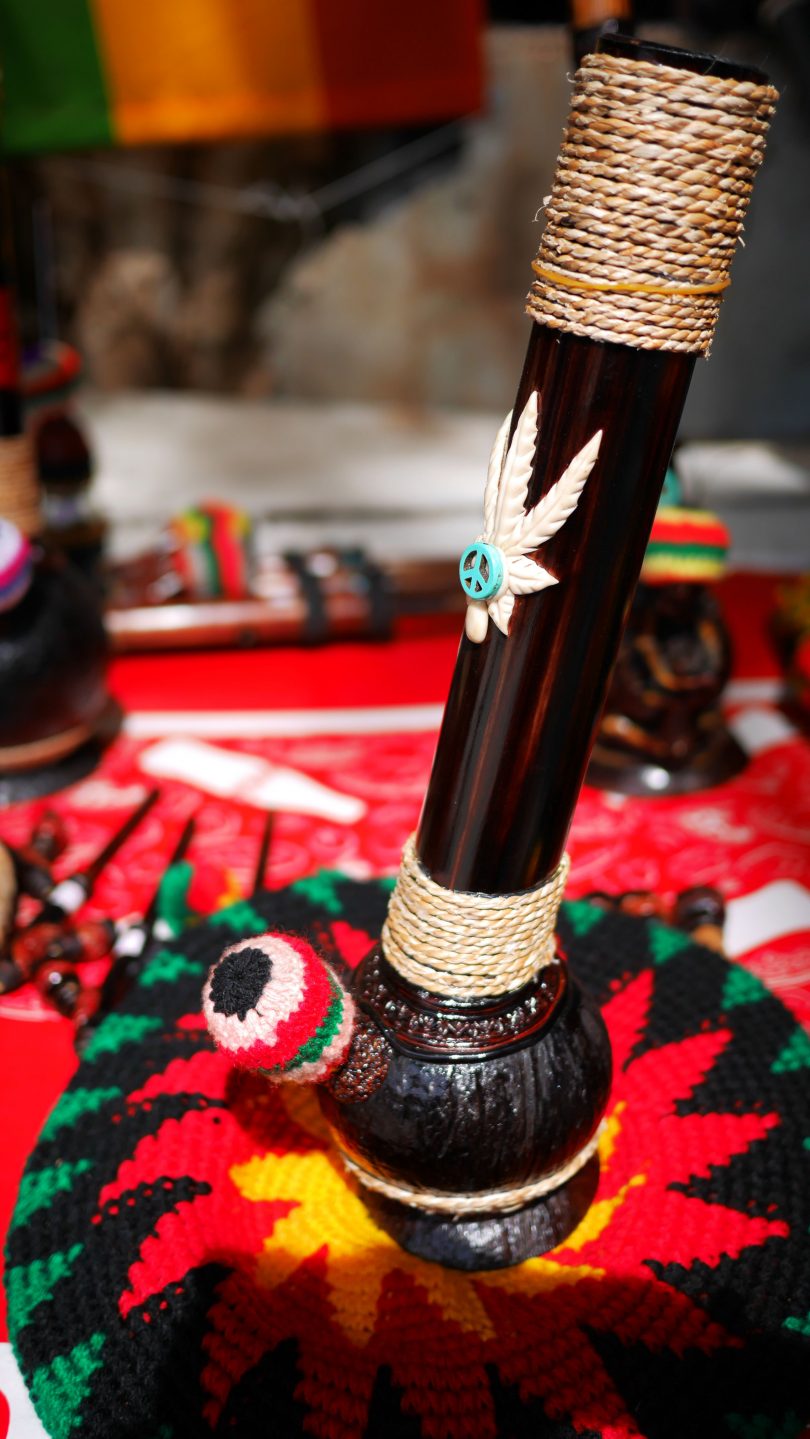Bongs have been one of the favorite forms for smoking cannabis and other herbs for millennia. They are also one of the oldest modes, factoring into different parts of history, in different cultures, throughout time. Today we might prize our beautiful glassware that doubles as art, but this was not how the world of bongs actually started. Read on to learn more about the general history of bongs and waterpipes.
The history of bongs is rather impressive and long, just like the history of cannabis itself. Whether a bong smoker or not, there are tons of ways of taking advantage of the cannabis plant, and all its great compounds, from delta-8 THC (a half brother to delta-9 which causes less anxiety and couch locking), to THCA (what THC is before it becomes THC), to THCV, a possible answer to the issue of diabetes. We’ve got a great selection of products, and an array of deals to take advantage of on delta-8 THC and many more. So check out our stock, and pick out your perfect product. Check out our selection of products in The Delta 8 Weekly Newsletter. And save big on Delta 8, Delta 9 THC, Delta-10, THCO, THCV, THCP & HHC products by checking out our “Best-of” lists!
What are waterpipes?
A waterpipe is a smoking device that uses water to filter the smoke being inhaled. The size and design can vary extensively, going from pocket-sized to three-feet high plus. The design can vary as well. A waterpipe requires an air and water tight chamber, and this is achieved when the user puts their mouth on the mouthpiece, closing off air to the chamber where the water is. The chamber requires a stem leading out to a bowl where something can be burned/vaporized for smoke/vapor, and another opening leading to a mouthpiece, or that functions as a mouthpiece.
Some waterpipes have a third opening, which can go by many different names. I know it as the ‘carb’, but it’s also called a ‘choke’, ‘hole’, or ‘turbo’ among other names. This is used to clear the smoke that builds in the chamber. The hole is blocked while lighting the herbs and inhaling the smoke, and then released to inhale the built-up smoke in the chamber. Conversely, waterpipes that don’t have this, generally have a bowl that can be removed from the stem, which functions the same way. Cheaper home-made waterpipes sometimes have neither.
The term ‘waterpipe’ can refer to a standard bong of today, or a dab which uses a bong-like structure to vaporize concentrates, or a bubbler which looks like a regular pipe but with a water chamber, or one of the most popular versions the world over, the hookah. Many bongs and other waterpipes also make use of a percolator, which is a glass piece used to cool down the air to produce a smoother hit.

The water used in bongs and waterpipes helps to filter the smoke being inhaled, and can make smoking bongs less harsh on a smoker than a standard waterless pipe. This happens because the water is able to trap heavier particles, which keeps them from being inhaled by the smoker. One of the most popular forms of a waterpipe is the hookah, which has historically been used for smoking tobacco and opium, although it can be used for cannabis as well. The hookah originates from India, an invention of a doctor by the name of Hakim Aboul Futteh Ghilani, who had been treating Emporor Akbar the Great in the 1500s, which led to his invention.
When the air moves through the water of a waterpipe, it creates the gurgling sound that bongs are known for. The user puts their mouth on the mouthpiece, covers the carb (if there is one), while lighting the herbs in the bowl and inhaling to bring air through the water chamber, and then up through the mouthpiece. Waterpipes like bongs are known for providing very large hits, and making users very high.
History of bongs in the world
The history of bongs – or at least from what we’ve found thus far – goes back to the Iranian-Eurasian Scyth tribes from what is now Russia. Approximately 2,400 years ago, tribal leaders were using bongs to smoke herbs, and these bongs were made of gold. The next oldest artifacts date back to around 1100-1400 CE, and relate to the finding of 11 bongs dated to that time period, in an Ethiopian cave. They were made of animal horns and primitive pottery from the time.
In written history, bongs start appearing in the 16th century in Central Asia, with the word ‘bong’ coming from the Thai word ‘buang’, which was used to designate smoking devices made out of bamboo. One of the most famous bong stories comes from Chinese history, during the Qing Dynasty. According to the story, Empress Dowager Cixi, who was a Chinese reagent, was found buried with three of her favorite bongs. Some of her bong collection can even be seen in the Palace Museum today.
It is unknown when exactly water began being used with pipes, as prior to water being used, herbs were smoked dry, from a regular pipe. It’s believed that the use of water also came from China during the Ming Dynasty, with the design spreading via the Silk Road thereafter. Though waterpipes were often associated with commoners, Empress Cixi demonstrates how they were sometimes the choice of royalty as well.
After the Qing Dynasty, waterpipes could generally be found in one of two fashions in Asia: one used by country folk, made of bamboo. And a more glamorous metal version used by the upper echelons of society. Using glass didn’t become an aspect of waterpipes until much later, and that came out of America.
History of bongs in America

Historical findings indicate that glass production on some level began in the coastal areas of Mesopotamia in 1500-2500 BC, where glass blowing techniques were used to make beads and jewelry. It grew in Ancient Rome during the Hellenistic Period, when glass was used for pottery and beads, employing a specific mosaic technique, called ‘millefiori’. This technique itself went out of style in the 18th century, but came back in the 19th, and can often be found adorning glass bongs today as implosion style marbles.
The glass industry – pushed in part by glass lamp shades made by Louis Comfort Tiffany, of Tiffany & Co. – was gaining in momentum. The bong industry was also doing very well in North America as tobacco had become a huge cash crop after the European settlement of America. These two factors coincided beautifully in the 1960-70s, with the invention of the glass bong.
The US bong industry was spearheaded by a guy named Bob Snodgrass, who spent time following a Grateful Dead tour, and making glass bongs along the way. Following his time as a dead head, Snodgrass took up in Eugene, Oregon, and began working with an apprentice. Snodgrass used borosilicate glass to create stronger bongs that could be used repeatedly without breaking. He also came up with the technique of ‘fuming’ whereby gold and silver are used to put coloring in borosilicate glass.
Of course, though this started an actual industry, the beauty of bongs is that they can be made from virtually anything. I’ve smoked out of an aluminum can, an apple, and a watermelon, just to name a few bong-ready objects. The ability to create a bong out of so many different materials was probably also integral in helping the popularity of the smoking method grow, even if it spurred on the industry in a non-brand name market way.
The bong take-down of 2003, and a recent resurgence
Regardless of whether they can be made at home, bongs became huge in the US, with a place in every head shop. By the 1990’s, other brand name bongs were entering the market, like Tommy Chong, who started ‘Chong’s Bongs’. Then, at the height of the industry (speculated at being worth one billion at the time), the US government did what it does best, got in the way. In 2003, the US government invested around $12 million in snuffing out the bong industry.
During that time, at least 55 retailers were put out of business, including the majority of ‘Chong’s Bongs’. Internet vendors were also stifled as well. This aggressive campaign was meant to stop sales in general, and, of course, ignored the fact that at the time (pre-dry herb vapes), using water actually created the safer method of smoking.

Though bongs aren’t demonized in the same way anymore (and are often left out of the conversation entirely), they are still not a part of an organized or brand name market. Killing the industry at the turn of the century did well to level the burgeoning name brands of the time.
Bongs can be difficult as products, especially when made of glass. This is because they can easily break, which generally renders them useless. Most people are more likely to buy a pretty glass piece, or whatever is at their local smoke shop, rather than caring about brands. This is wildly different than shopping for vapes, rolling papers, or weed itself, where the brand name, and product specificity, are incredibly important.
The recent resurgence in bongs can be seen in the beginnings of an actual products market, spurred on by companies like Thicket, which puts out the Thicket Waterpipe bong. This cleverly designed bong is meant as a travel bong, and transforms from a leak-proof canister which can hold the water in the bong while traveling, to its bong form where it provides incredibly smooth hits. Not only can the bong be stowed with water still inside, but the water doesn’t need to be changed for days at a time, as the bong contains an internal ash-catcher which keeps the water clean. The company does well to understand the breaking of glass parts, offering replacement pieces for all which is breakable.
Conclusion
As a bong smoker myself, I was excited to see Thicket enter the market with a name brand bong. The company did so, leveraging a great design that actually offers something above standard bong smoking, and outside of what a home-made bong can provide. If the history of bongs tells us anything, its that this popular method of smoking is not likely to go away quickly, no matter how many dabs and vapes are invented. It will be interesting to see if the years to come will bring with them a more established name brand bong market.
Hello and welcome to CBDtesters.co, the internet’s one-stop-shop for the most up-to-date and relevant cannabis and psychedelics-related news from around the world. Read-thru the site on a regular basis to stay in-the-know on the quickly-changing landscape of legal drugs and industrial hemp, and check out The Delta 8 Weekly Newsletter, so you’re sure to get all the news first.
Disclaimer: Hi, I’m a researcher and writer. I’m not a doctor, lawyer, or businessperson. All information in my articles is sourced and referenced, and all opinions stated are mine. I am not giving anyone advise, and though I am more than happy to discuss topics, should someone have a further question or concern, they should seek guidance from a relevant professional.







